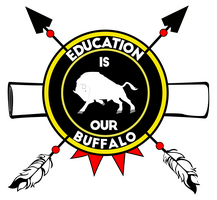Most historians credit Sequoyah, the most famous Cherokee, with the invention of the syllabary. However, some oral historians contend that the written Cherokee language is much, much older. But even if there was an ancient written Cherokee language, it was lost to the Cherokees until Sequoyah developed the syllabary. The development of the syllabary was one of the events which was destined to have a profound influence on our tribe's history. This extraordinary achievement marks the only known instance of an individual creating a totally new system of writing.
Born in the 1770s in the Cherokee village of Tuskegee on the Tennessee River, Sequoyah was a mixed blood whose mother, Wureth, belonged to the Paint Clan. Sometimes the young man was known by his English name, George Gist or Guess, a legacy from his white father. Sequoyah, reared in the old tribal ways and customs, became a hunter and fur trader. He was also a skilled silver craftsman who never learned to speak, write or read English. However, he was always fascinated with the white people's ability to communicate with one another by making distinctive marks on paper - what some native people referred to as "talking leaves".
Handicapped from a hunting accident and therefore having more time for contemplation and study, Sequoyah supposedly set about to devise his own system of communication in 1809. He devoted the next dozen years to his task, taking time to serve as a soldier in the War of 1812 and the Creek War. Despite constant ridicule by friends and even family members, and accusations that he was insane or practicing witchcraft, Sequoyah became obsessed with his work on the Cherokee language.
"It is said that in ancient times, when writing first began, a man named Moses made marks on a stone. I can agree with you by what name to call those marks and that will be writing and can be understood," attributed to Sequoyah.
Some historians say that ultimately Sequoyah determined the Cherokee language was made up of particular clusters of sounds and combinations of vowels and consonants. The eighty-five characters in the syllabary represent all the combination of vowel and consonant sounds that form our (the Cherokee) language. In 1812, Sequoyah's demonstration of the system before a gathering of astonished tribal leaders was so dramatically convincing that it promptly led to the official approval of the syllabary.
Within several months of Sequoyah's unveiling of his invention, a substantial number of people in the Cherokee Nation reportedly were able to read and write in their own language. Many mixed bloods were already able to read and write in English, but the syllabary made it possible for virtually everyone in the Cherokee Nation, young and old, to master our language in a relatively short period of time.
In 1827, the Cherokee council appropriated funding for the establishment of a national newspaper. Early the following year, the hand press and syllabary characters in type were shipped by water from Boston and transported overland the last two hundred miles by wagon to the capital of the Cherokee Nation, New Echota. The inaugural issue of the newspaper, "Tsa la gi Tsu lehisanunhi" or "Cherokee Phoenix", printed in parallel columns in Cherokee and English appeared on February 21, 1828. It was the first Indian newspaper published in the United States.
Go Back To: Cherokee Nation
